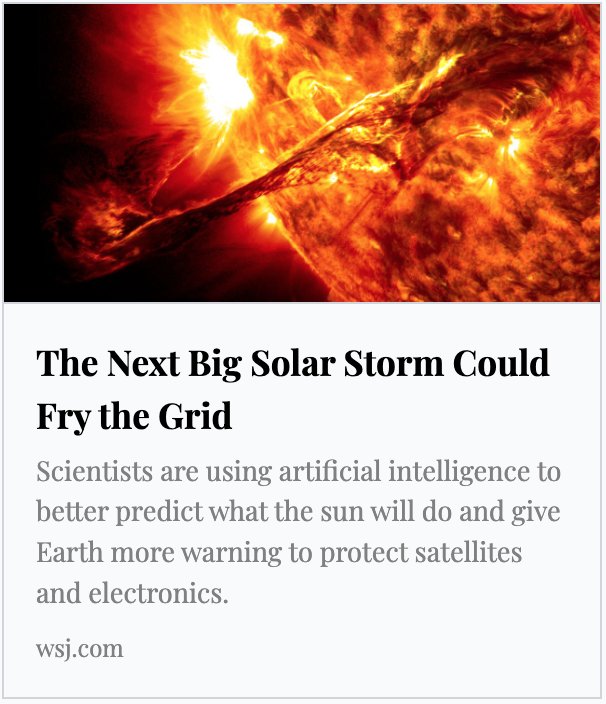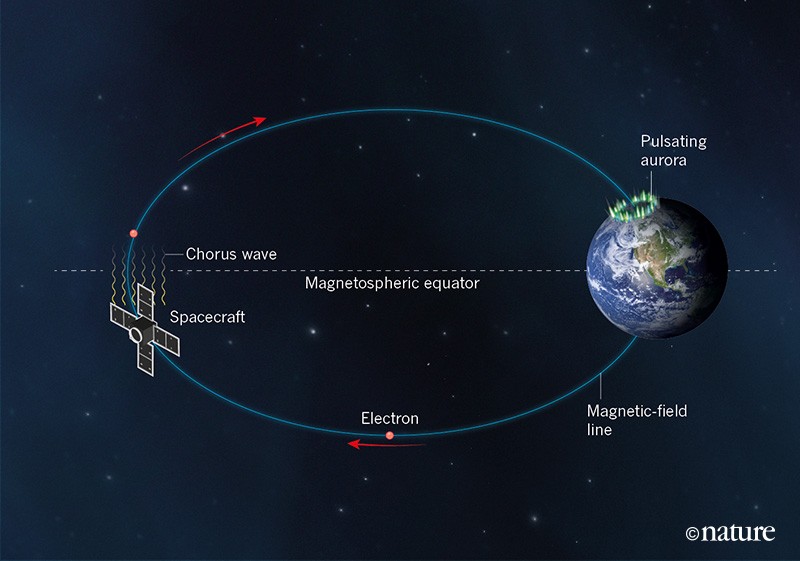The Magnetosphere-Ionosphere Research Laboratory (MIRL) at the Institute for the Study of Earth, Oceans, and Space (EOS), University of New Hampshire contributes to a variety of research projects in space physics. The lab primarily focuses on the development of instrumentation for ground-based, rocket-based, and satellite observations of space physics phenomena and analysis of the resulting observations.
Current research methods include:
- Ground-based observations from ultra low frequency (ULF) and extremely low frequency (ELF) search-coil magnetometers for the study of magnetosphere-ionosphere coupling and its relationship with auroral phenomena.
- Rocket-borne observations from a low light imager, UV Photomultiplier Tube, particle detectors for in-situ auroral measurements, and magnetic field instruments.
- Data analysis from a variety of satellite missions including the recently launched e-POP satellite.
News
16 June 2025
Check out this amazing EMIC wave event seen at Halley Station in the antarctic! This could lead to an interesting paper-- especially since nothing was seen at the north pole.
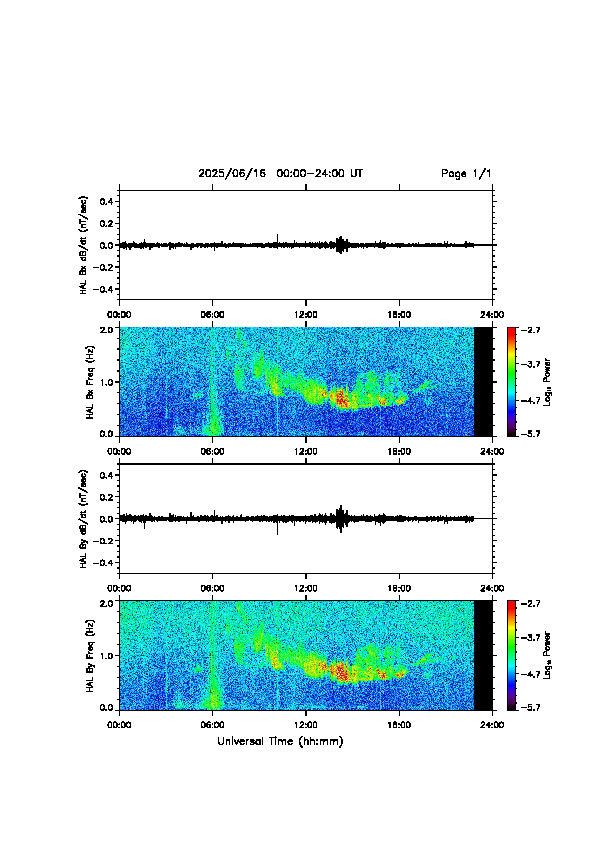
6 February 2025
We welcomed a new addition to our lab today! Baby Rowan was born healthy and happy, good luck to Chrystal Gauthier on her maternity leave (yes I wrote this myself haha!)
December 2024
AGU 2024! Research Scientist Chrystal Gauthier presenting data from 3 sounding rockets showing an increase in heavy ions in the cusp. Check out our other poster from graduate student Jenna Burgett
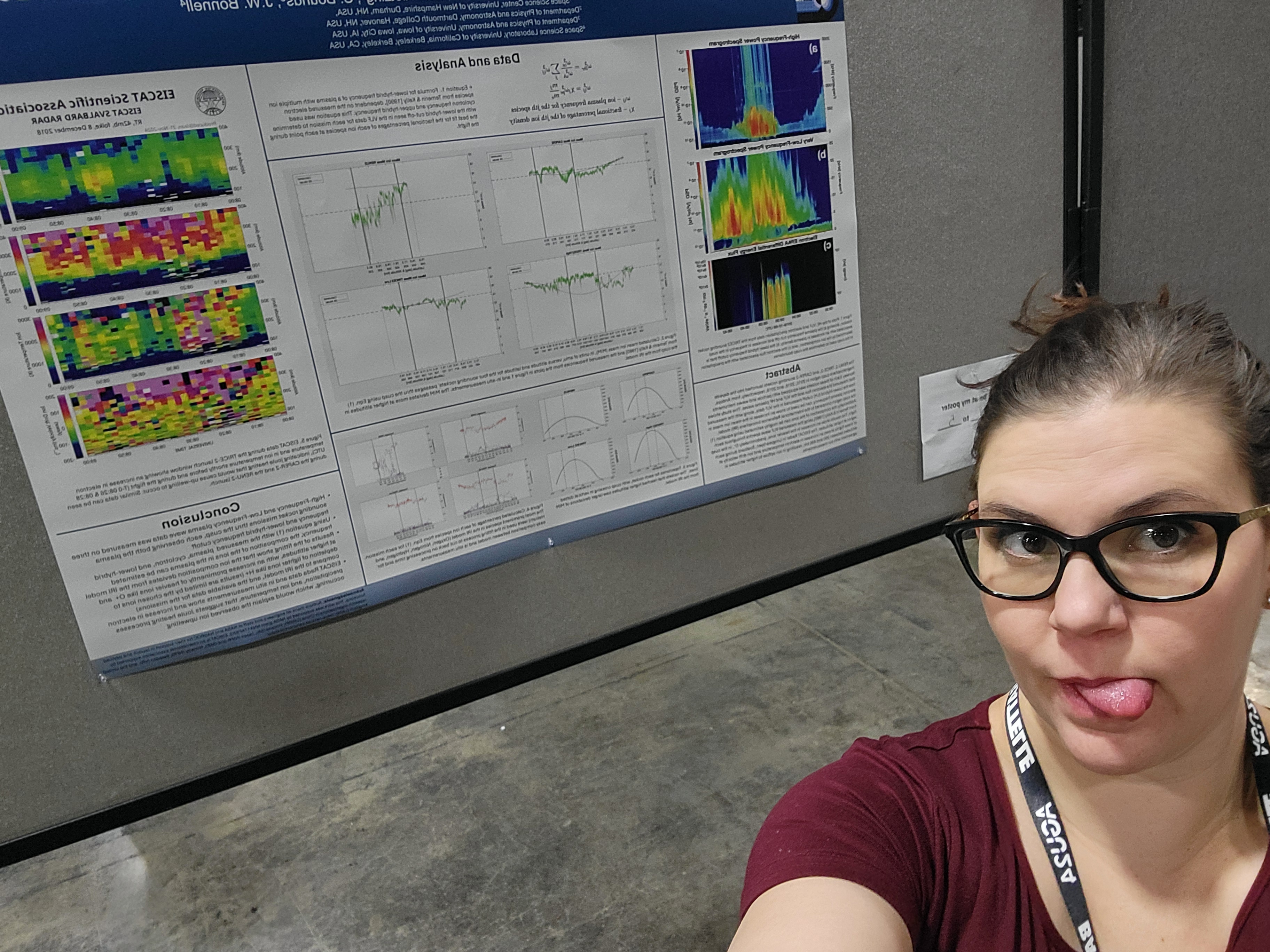
September 2024
Another successful trip to install a new Induction Coil Magnetometer system, this time in Narsarsuaq Greenland!
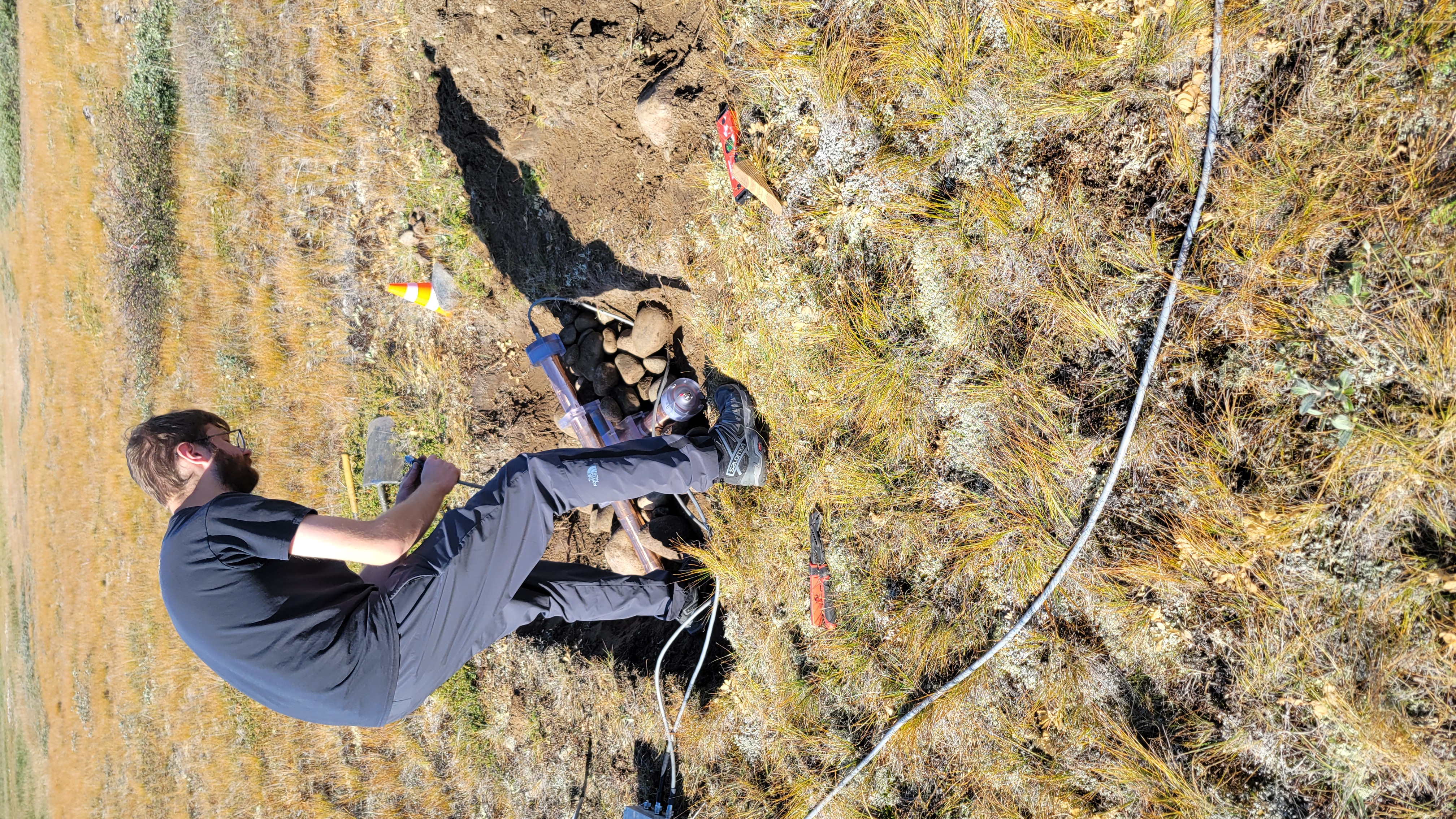
4 August 2024
MIRL team (Henri Chretien and Nick Jones) returning from an 18 hour boat ride from Hornsund in Svalbard, Norway. Thank god they didn't get eaten by a polar bear. Go check out the most recent data! ULF Data
June 2024
MIRL team (Noah McCandless, Dom Puopolo, and Chrystal Gauthier) up in the remote town of Sanikiluaq, Nunavut, Canada updating/installing Induction Coil Magnetometers to study Earth's magnetic field waves. Check out the local wildlife!
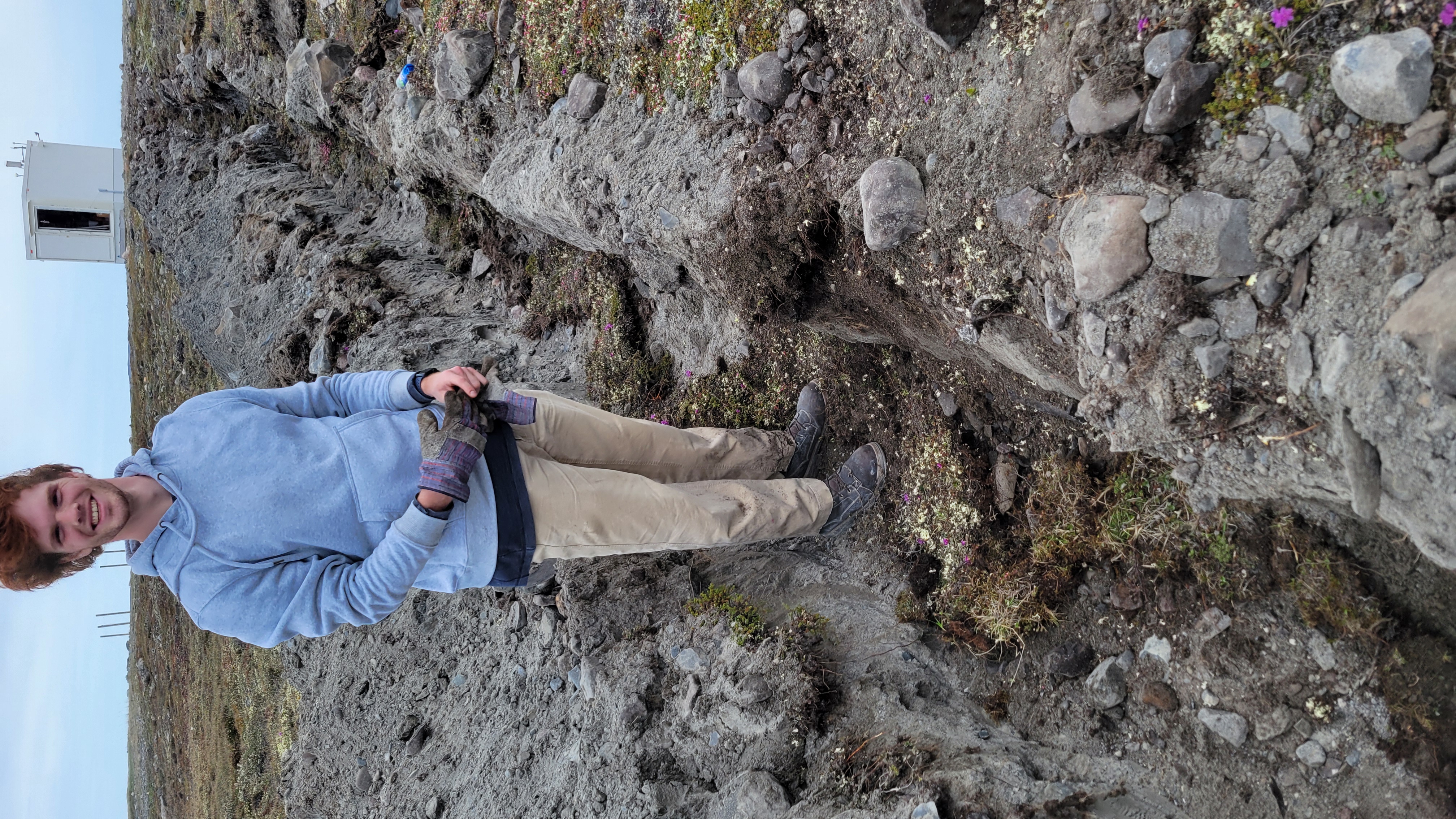
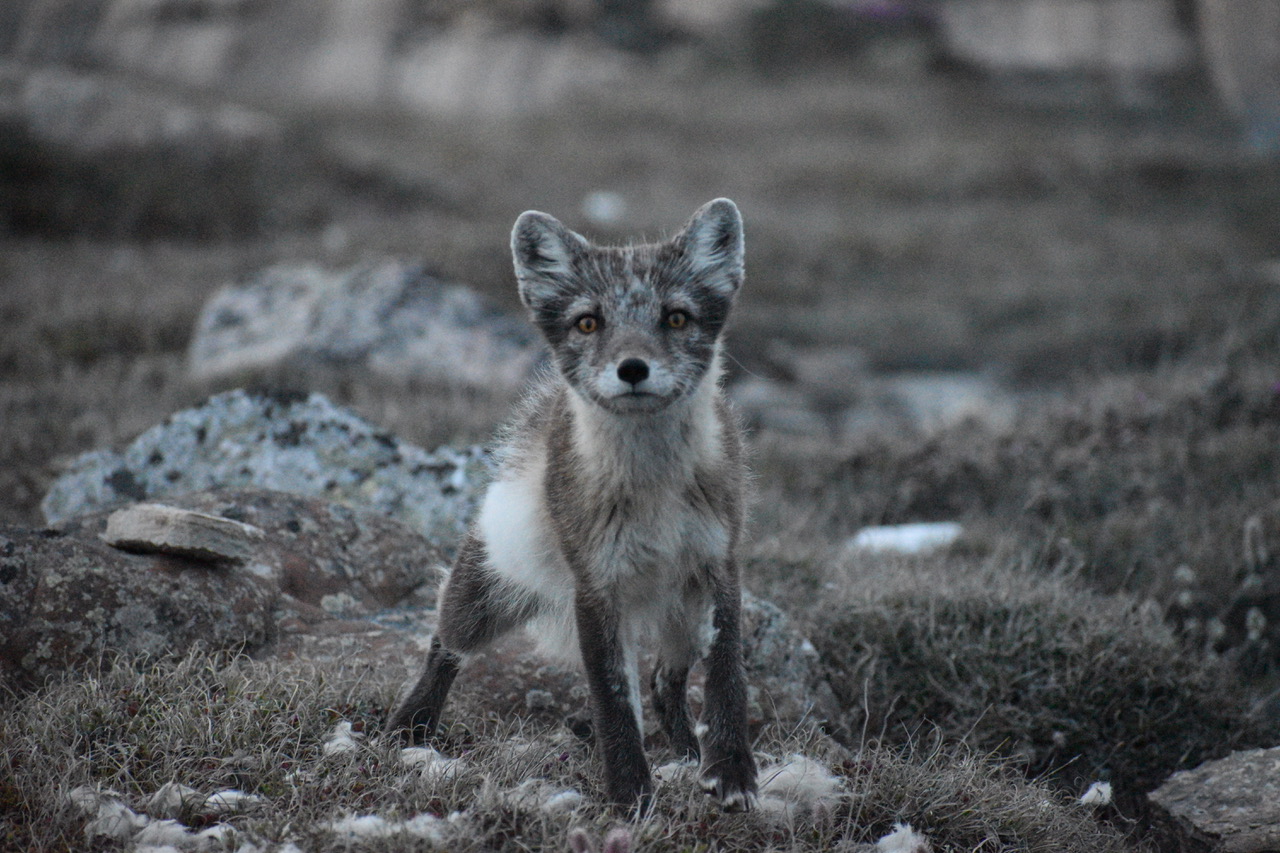
7 November 2023
MIRL Research Scientist Chrystal Moser-Gauthier makes her acting debut in this UNH advertisement! Don't blink or you'll miss her!
19 October 2023
Michelle Salzano has been awarded an NSF Postdoctoral fellowship titled "Investigating Polar Geomagnetic Signatures Associated with Substorm Onset to Address Data Gaps in Southern Hemisphere Space Weather Research." Congratulations Michelle!
12 October 2023
See this article from The Wall Street Journal, featuring former MIRL PhD student Ian Cohen, discussing solar storms, their impact on Earth, and methods scientists use to predict them.
07 July 2023
Congratulations to Dr. Niharika Godbole, who successfully defended her PhD disseration this morning! Fresh research and memes were served, along with coffee and donuts in the lounge.
20 November 2022
The ACESII sounding rocket was successfully launched from Andøya Space Center today, at 17:20 UT! The two Dual-Electron Retarding Potential Analyzers (DERPAs) carried by the the high-flier and low-flier payloads performed well during the flight, and their preliminary data looks excellent!
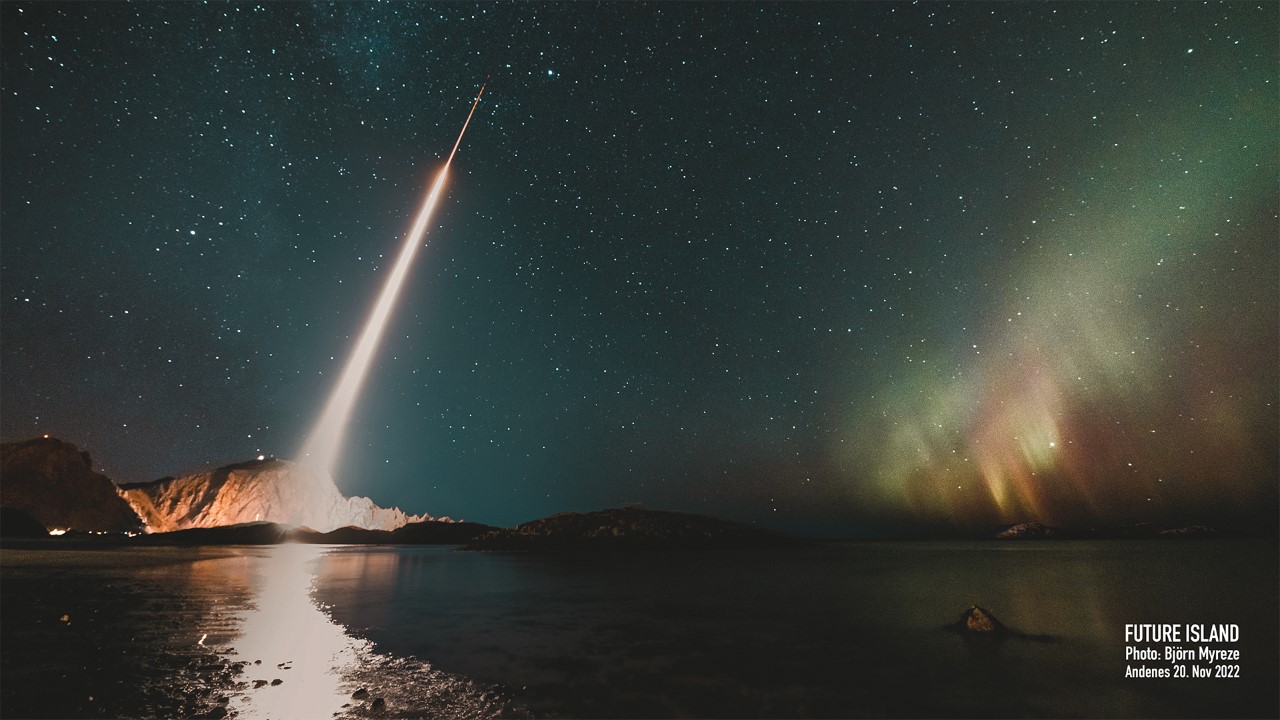
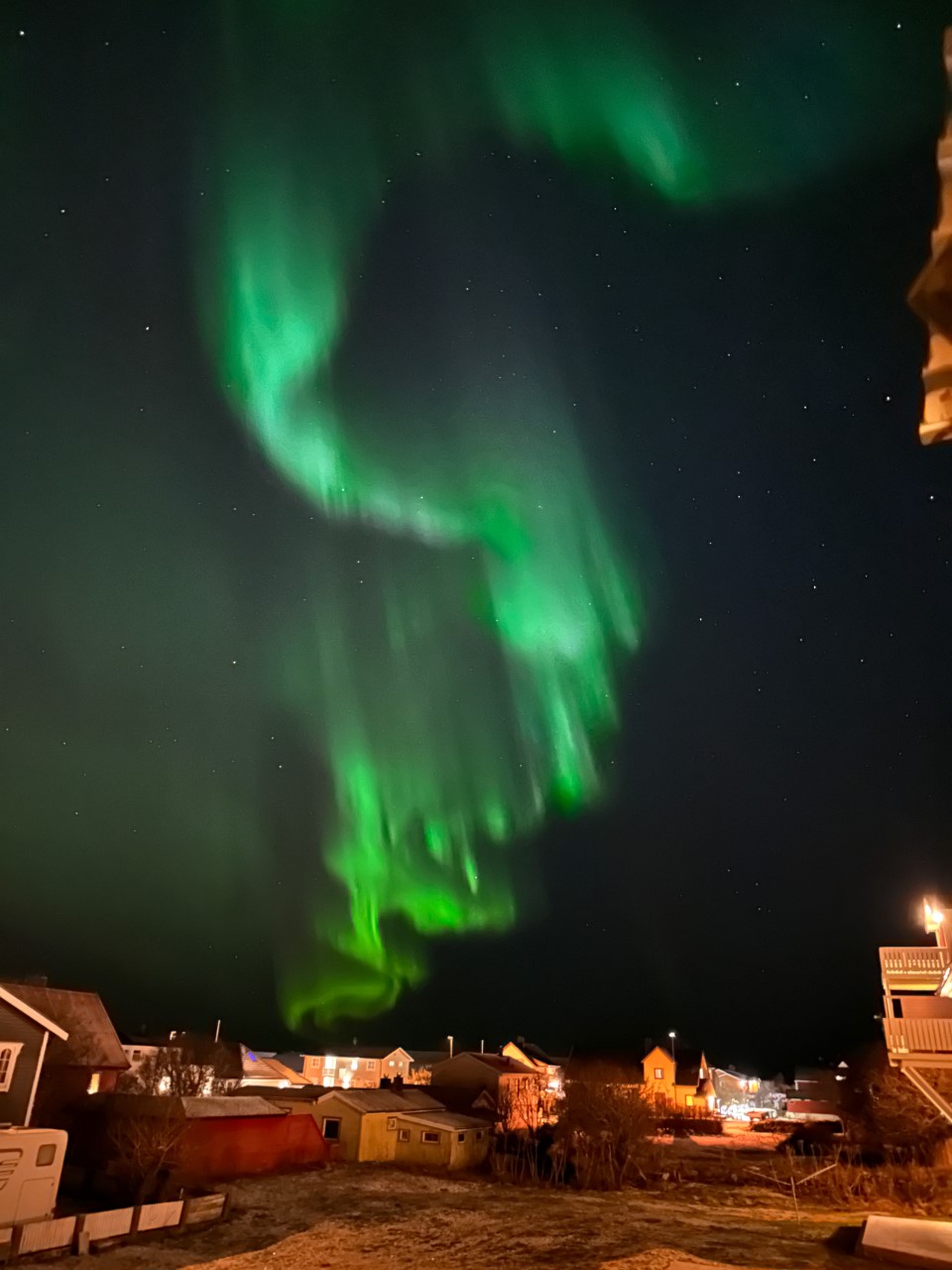
The launch was live-streamed on the Andøya Space YouTube channel and can be viewed at the following link.
28 August 2022
Congratulations to Niharika Godbole, whose first-authored manuscript was accepted today for publication by the journal, Frontiers in Physics! The article, titled "Observations of ion upflow and 630.0 nm emission during pulsating aurora" will be appearing alongside related articles in the upcoming special issue, "Circulation of Heavy Ions and Their Role in Regulating the Near-Earth Plasma Dynamics", scheduled for release later this fall.
08 June 2023
Many hearty congratulations to our very own Dr. Michelle Salzano, who successfully defended her thesis today! The process of defending is never easy, but that PhD is absolutely worth it!
29 March 2022
This article, published today in UNH Today talks about the recent Loss Through Auroral Microburst Pulsations (LAMP) rocket launch from Poker Flat, AK, and features our very own Dominic Puopolo (congrats, Dominic)! We are still riding the high of the successful launch, and are happy to see the UNH community share in our excitement.
5 March 2022
Another exciting development – we launched the LAMP sounding rocket at approximately 6:27am EST (2:27am local time) this morning from the Poker Flat Research Range in Poker Flat Alaska!
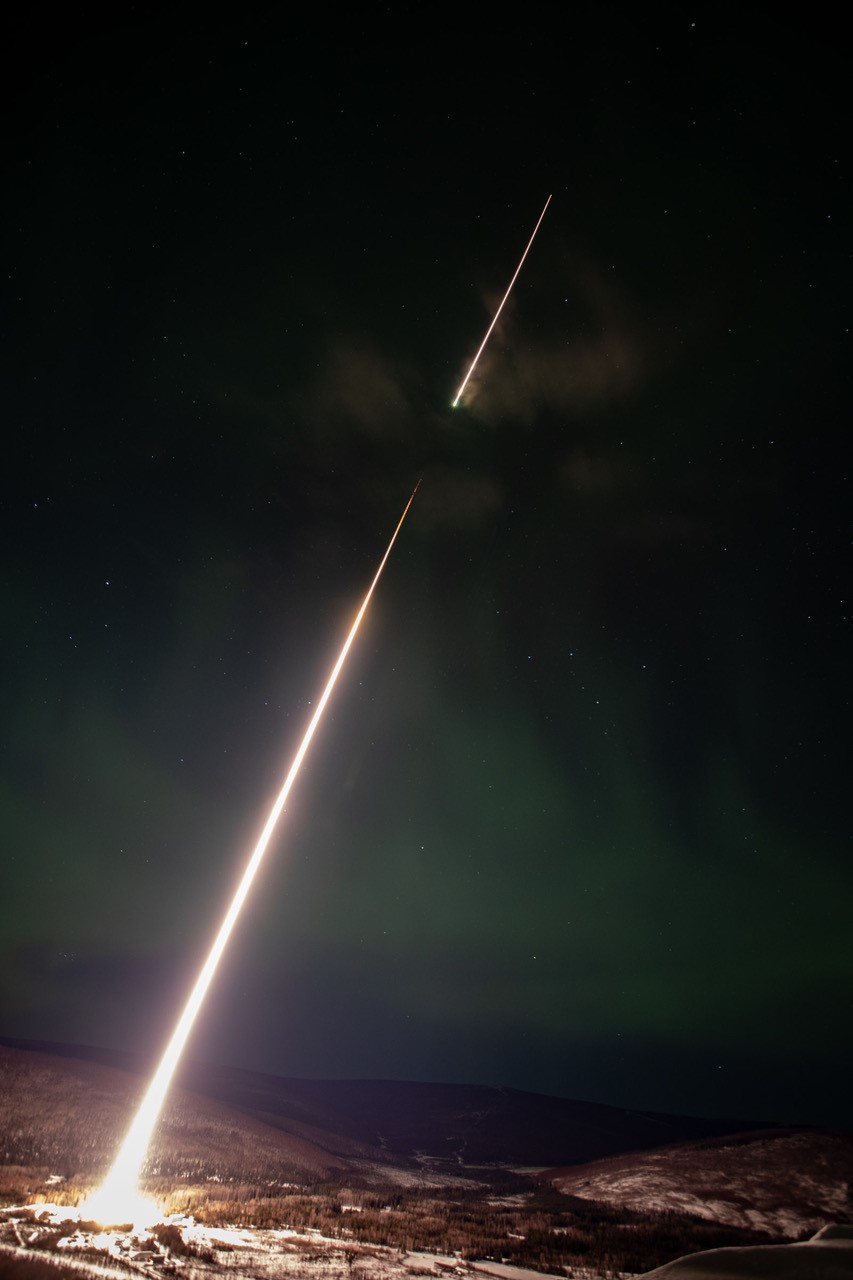
1 December 2021
We are extremely happy to announce the successful launch of the second iteration of the Cusp Region EXperiment (CREX-2) rocket from the Andoya Space Flight Center at approximately 9:25 UT (4:25am local time) this morning! We have never experienced a launch where we were able to launch at the very start of the launch window, so we are very excited about this success!
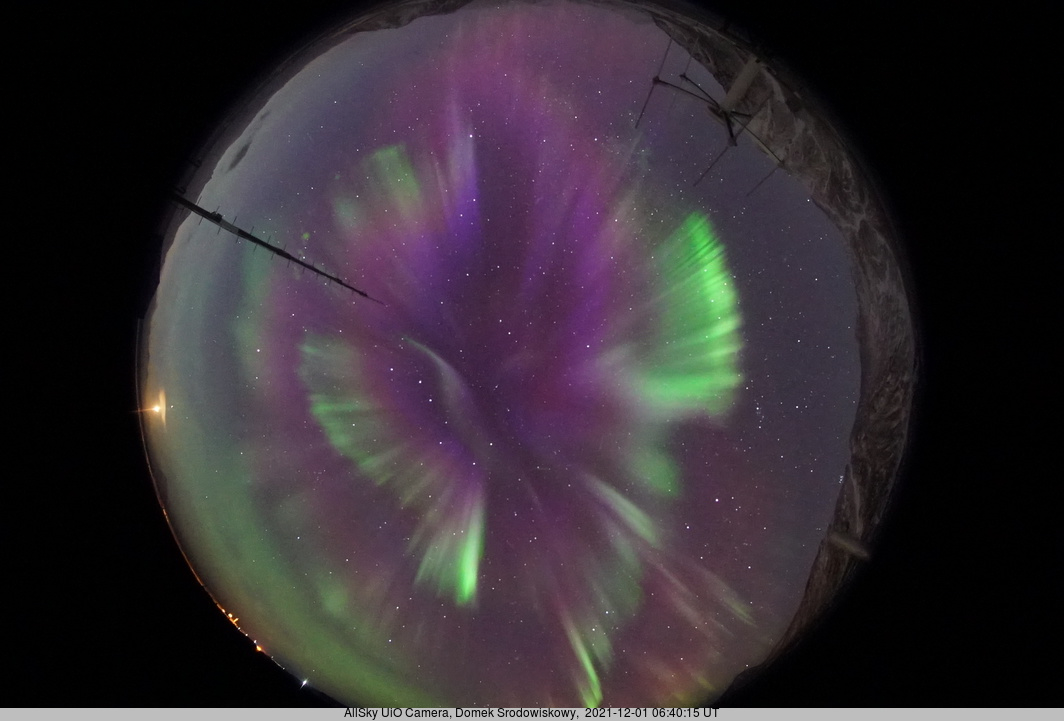

This first photo is from Hornsund (south of LYR by ~100 km), a few hours before launch. The level of activity was fairly persistent until launch, which motivated the launch.
This second photo shows data from the Allsky cameras. The upper left shows the soft electron aurora that we were targeting. The magenta line is the CREX2 trajectory. The middle plot show the north-south strip of that same data, plotted versus time so we can see the history. What we caught is the Poleward Moving Auroral Form (PMAF) that started around 9:30 UT. It’s been a very, very good night indeed!
20 August 2021
Today, the New Hampshire delegation announced that the University of New Hampshire has been awarded about $2.1 million to "support scientific research to better understand the impact of magnetic storms, or space weather, on Earth and bolster the Arctic’s resiliency and sustainability". This is fantastic news indeed! Our own Marc Lessard Ph.D. commented within the article that this grant will help to "support our research in making global measurements of Earth's magnetic field and, specifically, ultra-low frequency waves," which are "thought to play an important role in Earth's radiation belts and magnetospheric substorms." The aim of this research is to understand the effects of space weather on satellites, GPS, and power grids (which can be adversely affected by Ground-Induced-Currents associated with magnetic substorm activity).
16 May 2021
We are very excited to announce that the Kinetic-scale Energy and Momentum Transport eXperiment (KiNET-X) launched this evening from NASA Wallops Flight Facility!! Included in this payload are 2 CERPAs, 2 FIRPAs, 1 ERPA, and 1 EPLAS. The data thus far looks great, and we are looking forward to subsequent analyses therein! You can read more about KiNET-X on NASA's webpage. Additionally, we were pleasantly surprised to find that NPR had published an article about the launch!! This is indeed exciting news!
10 May 2021
Footage displaying the periodic dimming, disappearing, and subsequent reappearing of auroral features (dubbed "auroral erasers") within a diffuse auroral background, from 2002 has led to a recent publication in the Journal of Geophysical Research: Space Physics. Congratulations to Professor Allison Jaynes, who co-authored this study! You can read about this study in detail here.
14 December 2020
Congratulations to Professor Prescod-Weinstein, who has been named as one of the "ten people who helped shape science in 2020" by Nature magazine! This year alone, she has finished writing her first book and started working on another, authored an article for New Scientist magazine, published two additional chapters in books about education research, and continued being an excellent mentor for her graduate students -- among many other achievements. She has also been a proponent againt racism in academia, having organized the Strike for Black Lives earlier this year with other scientists in the community.
Please read about her, and the other nine extraordinary people who helped shape science in 2020 here.
01 October 2020
Many hearty congratulations to Professor Charles William Smith, who has been awarded the Space Physics and Aeronomy Richard Carrington Education and Public Outreach Award for his hands-on educational and outreach endeavors -- in particular, his leadership of Project SMART! Project SMART involves faculty mentorship, seminars, and student research projects, culminating in the development and launch of a scientific balloon experiment.
Please see the full article for details.
For further information about Project SMART, please visit the project page here.
09 July 2020
A new report, conducted by the George W. Bush Institute and the Opus Faveo Innovation Development consulting firm, has ranked UNH just behind Princeton and Carnegie Mellon in the "mid-sized category and in the top 100 of all U.S. universities for innovation impact regardless of size or research budget." This is indeed, exciting news! We strive to keep up the good work.
24 April 2020
Congratulations to Dr. David Kenward for successfully completing his thesis defense on the topic of the impact of fine scale drivers on upwelling processes! He will be missed sorely, and we wish him all the best in his future endeavors.
Abstract
Ionospheric upwelling and outflow are large-scale processes which affect the dynamics of the greater magnetosphere-ionosphere-thermosphere system. Though these terms historically refer to the propensity of ions to increase in scale height and escape Earth's gravity due to the collective effect of energization processes, that same behavior is frequently observed to occur with neutral species within the cusp regions of the ionosphere. Although may different driving mechanisms have been identified which contribute to the energization and increase in scale height of the ionosphere, the relative energy budget of these individual drivers is debated. In this dissertation, data from the Rocket Experiment for Neutral Upwelling 2 (RENU2) will be presented as a case study of these energization processes. In particular, sub-kilometer scale features are examined to demonstrate that a significant portion of energy flux into the ionosphere is carried by fine-scale structures which have an integrated effect to cause the large-scale upwelling. An additional study is presented on the ability of pulsating aurora to drive upwelling. Pulsating aurora are spatially confined regions of periodic brightening driven by electron precipitation (on the order of 10s of keV) embedded in a diffuse aurora background (on the order of a few keV). Though these two studies are unrelated, both are linked by the idea that large-scale responses of the ionosphere may be driven by fine-scale structures. Additionally, a section is presented on the development and first flight of an ejectable instrument to measure electron temperatures in a distributed array from a single sounding rocket. The ability to perform multi point measurements from a single rocket platform is paramount to understanding the fine scale coupling of the ionosphere to large scale phenomenon.
20 April 2020
Congratulations to Dominic Puopolo, who has been officially promoted to Research Project Engineer I! Dominic joined MIRL in 2017 as an undergraduate, and has been involved with the design and production of instruments on SUBTEC-8, LAMP, CREX-2, KINET-X, and other sounding rocket missions. He is also working to support other rocket and satellite instrumentation at the UNH Space Science Center. We are looking forward to his continued efforts at MIRL and beyond!
10 April 2020
We are very excited to announce that the Space Weather Follow-On Lagrange (SWFO-L1) Magnetometer contract has been awarded to the Southwest Research Institute (SwRI) by NASA! Development of this instrument is to be conducted by a team of eight researchers and one student from the UNH Space Science Center (SSC)-- including our very own Marc Lessard as Deputy PI-- and SwRI Earth, Oceans, and Space (EOS) offices located at UNH.
The SWFO-L1 Magnetometer is to be included as part of the SWFO-L1 satellite instrument suite, which will measure the solar magnetic field from the L1 Lagrange point. From this vantage point, SWFO-L1 will have an unobstructed view of the solar corona, allowing observations of the solar wind approximately 1 hour before it reaches Earth. Since SWFO-L1 is designed to measure the vector components of the Interplanetary Magnetic Field (IMF), the data that it will collect will enable researchers to better predict the onset of solar substorm activity. Such substorms pose health hazards to astronauts, disrupt satellite (including GPS) communications, and adversely affect electrical power grids. The ability to accurately predict and prepare for such space weather phenomenon will be invaluable, making the SWFO-L1 magnetometer a necessity for future space missions!
Currently, SWFO-L1 is planned to launch in 2024.
24 October 2019
SUBTEC-8 was a technology development rocket launched from NASA Wallops Flight Facility in October 2019. For the mission, MIRL developed a new instrument – a variation of the existing ERPA instrument that would launch as a rocket-propelled sub-payload. The new CERPA was designed to collect information on electron temperature across a wide area, and to test NASA’s new LED-based telemetry.
29 August 2019
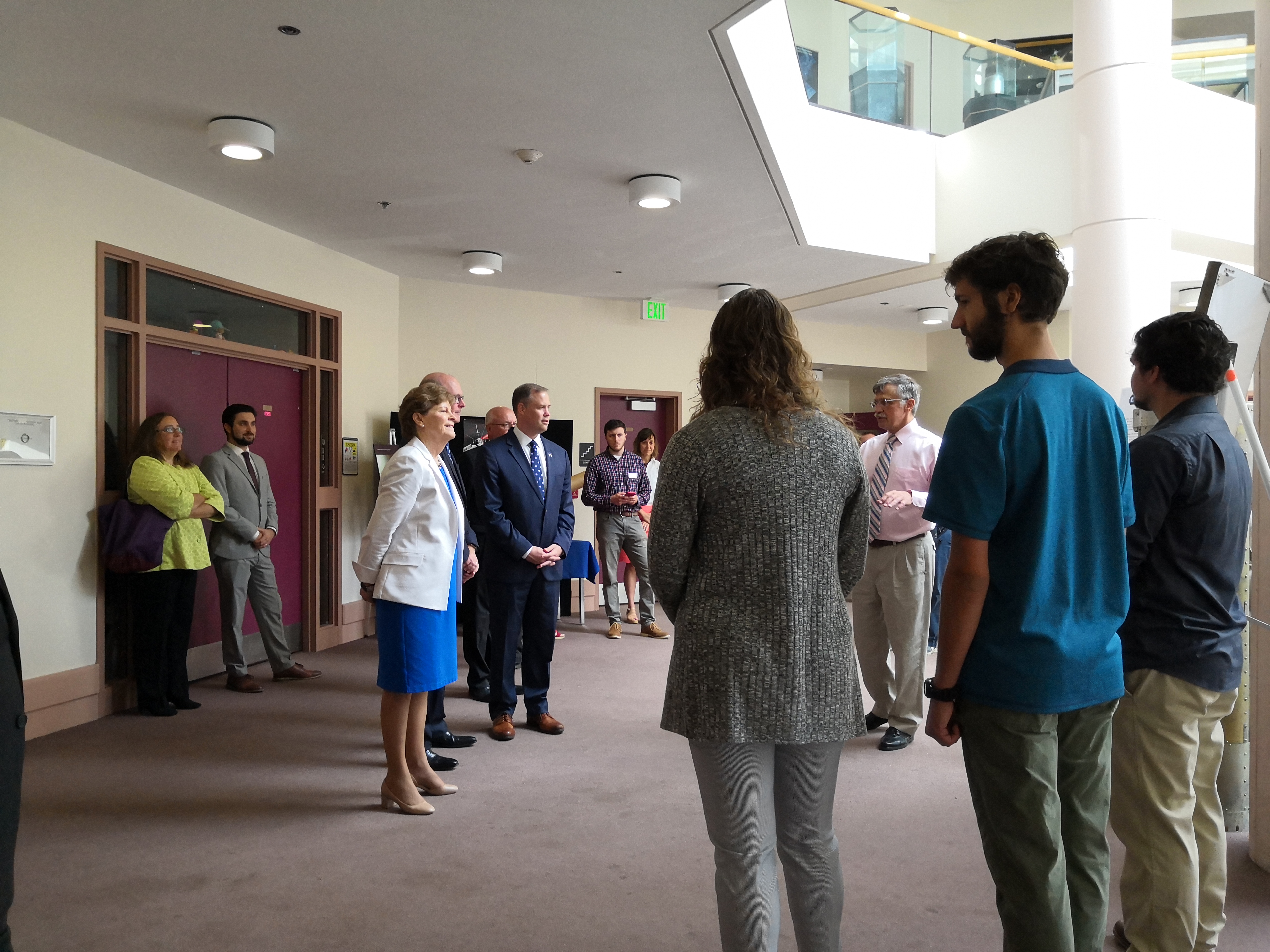
On Thursday August 29 2019, United States Senator Jeanne Shaheen and NASA administrator James Bridenstine visited EOS. Pictured above are three of our lab's undergraduate researchers, Naomi Wight, Connor Fleury, and Dominic Puopolo, explaining some of their work to our esteemed guests, including their key involvement in multiple rocket launches.
24 April 2019
What creates a 'speedbump' in space?
It's been hypothesized that upwelling events are to blame for the drag satellites sometimes experience in low Earth orbits, but a recent study takes this hypothesis a step further. Using data from the Rocket Experiment for Neutral Upwelling 2 (RENU2) mission, Lessard et. al. point the finger at Poleward Moving Auroral Forms (PMAFs), which are a high-altitude but lower energy type of aurora. Speaking to UNH's Newsroom, Lessard said, "We knew these satellites were hitting "speed bumps", or "upwellings"... But on this mission we were able to unlock some of the mystery around why this happens..."
For more information, please read this article on AGU's Blogosphere, Aurora create speed bumps in space.
29 March 2019
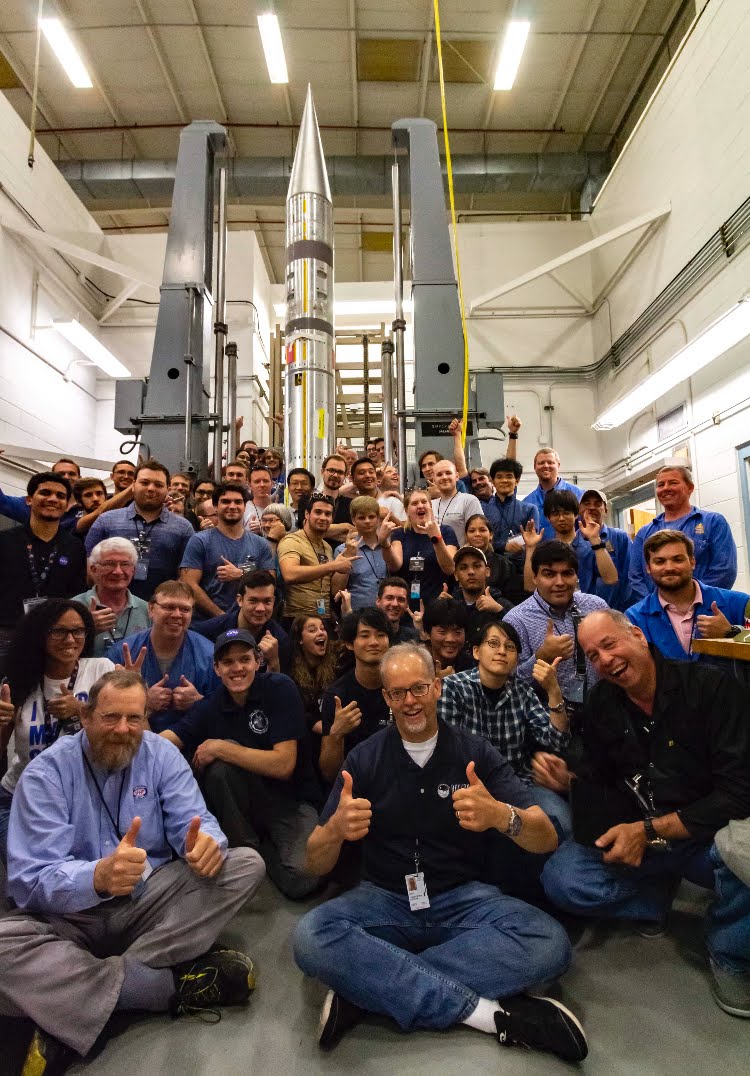
On January 13 2019, the student-led rocket G-CHASER launched successfully. We're very proud of current students Naomi Wight, Connor Fleury, and Dominic Puopolo, as well as research scientist Brent Sadler and alumni Tyler Chapman. You can watch a video of the launch below.
G-CHASER Liftoff from Andøya Space Center on Vimeo.
For more information, please read this article published on UNH Today, Rocket Power.
31 May 2018
Dr. Sarah Jones, a UNH graduate and former MIRL member, has been named NASA Project Scientist for the NASA Satellite missions ICON and GOLD. She will be giving a lecture on 7 June at the Library of Congress in Washington D.C. about the science these missions hope to accomplish. Click here for details.

NASA image of the commercial satellite carrying the GOLD instrument https://www.nasa.gov/sites/default/files/thumbnails/image/goldbeautyshot.jpg
Also in the news, UNH has had a record number of students named as Fulbright Scholars, including Tyler Chapman ('18), recent graduate of the UNH physics engineering program and research member of MIRL. Read more here.
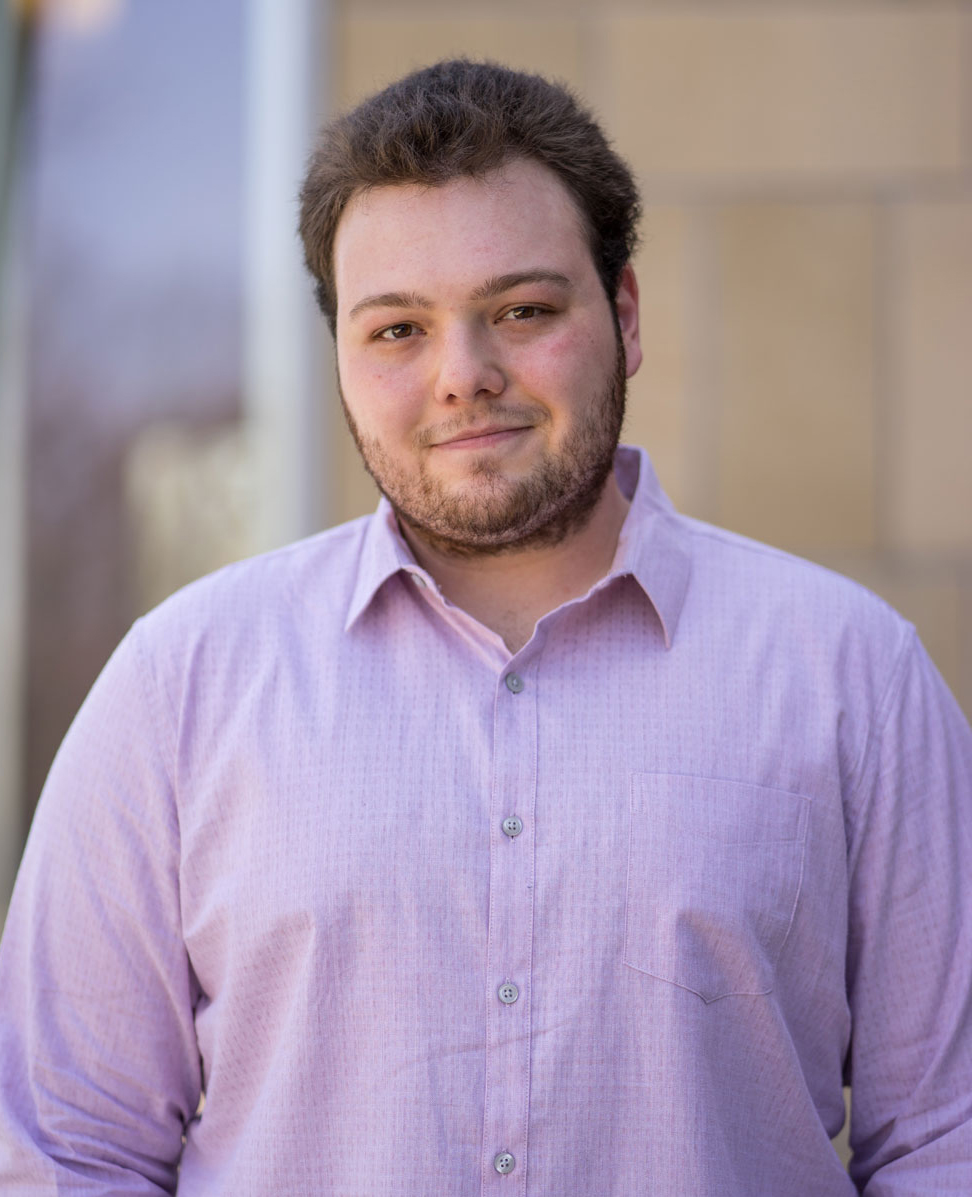
Tyler Chapman (Photo: Alex Nguyen)
Read more about Tyler's award from the Physics Department announcement.
14 May 2018
On April 12, Bruce Fritz successfully defended his dissertation, 'Fine structure in the ionosphere'.
Bruce has been a graduate student with MIRL since 2014. As a member of MIRL, he's researched a number of topics, including black and pulsating aurora in the ionosphere, neutral upwelling in the cusp region, and ELF whistlers in a sunlit ionosphere. He's also been heavily involved in the hardware aspects of research in the lab: he was a major contributor to the RENU2 sounding rocket mission, both in terms of instrumentation and data analysis, and he was also a major contributor to the development and installation of the ground-based ELF searchcoils in Antarctica. In addition to his research, Bruce has acted as MIRL's lab manager for a number of years.
Congratulations Dr. Fritz! Best of luck with all your future endeavors!
14 May 2018
Every year, the UNH Physics department awards one student the Harper Fellowship. This year, the recipient is MIRL graduate student Niharika Godbole!
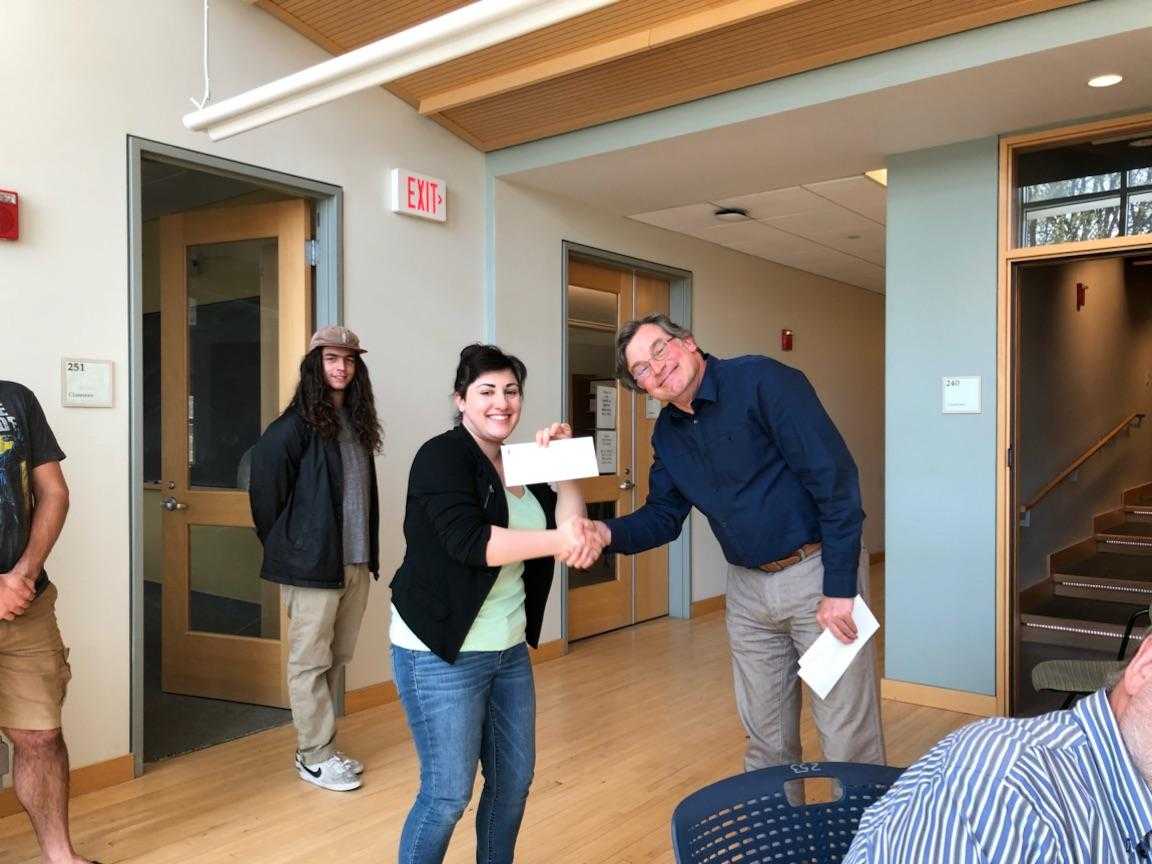
Congratulations Niharika!
More information about the fellowship can be found here.
20 March 2018
Michelle Salzano, current MIRL graduate student, has been awarded an NSF Travel Award to attend the SCAR Open Science Converence in Davos, Switzerland! This competitive award was offered through the NSF Office of Polar Programs.
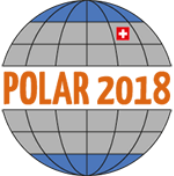
Michelle will represent the University of New Hampshire and the Magnetosphere-Ionosphere Research Laboratory at the Arctice Science Summit, where she will have the opportunity to present her work and meet other research groups that operate in the Polar Regions.
Congratulations Michelle!!!
16 March 2018
Tyler Chapman has been named a 2018 Fulbright Scholar which provides grants for individually designed research projects outside the U.S. Tyler has been with MIRL for almost three years and will graduate in May 2018. His research under the scholarship will take him to Norway, where he will work with geophysicists there to understand the connection between low frequency magnetic signals and the onset of earthquakes.

This award is an extremely competitive, national scholarship through which Tyler will represent the United States well. Fulbright alumni include 59 Nobel Laureates, 82 Pulitzer Prize winners, 71 MacArthur Fellows, 16 Presidential Medal of Freedom recipients and thousands of leaders across the private, public, and non-profit sectors.
Congratulations Tyler!!!
22 February 2018
Last week, Dr. Allison Jaynes (former MIRL member), wrote an article about new research on pulsating aurora: "Spectacular light shows in Earth’s atmosphere called pulsating auroras are directly linked to processes in space. After decades of research, the full chain of events that creates such auroras has been observed." (Nature 554, 302-303 (2018), doi: 10.1038/d41586-018-01669-z)
Figure from Kasahara et al. Read the full research article here.
8 February 2018
On January 31, 2018, the Space Studies Board of the National Academies of Sciences, Engineering, and Medicine hosted a celebration of the 60th anniversiary of the Explorer 1 mission and the associated discovery of the Earth's radiation belts. Dr. Allison Jaynes, former MIRL member and current faculty member at the University of Iowa, gave a talk on the "Cutting Edge of Radiation Belt Research."
Cutting Edge of Radiation Belt Research from The National Academies on Vimeo.
The conference focused on scientific and technological advances over the last 60 years, beginning with the history of the mission and radiation belt discoveries, and then continuing with the latest results from NASA's Van Allen Probes and other missions observing the Earth system.
2 February 2018
From the Washington Post:
NASA lost contact with a satellite 12 years ago. An amateur just found its signal.
NASA confirmed an incredible discovery Tuesday — that an amateur radio astronomer, on the hunt for a classified government satellite, stumbled instead upon signals from a spacecraft that had been thought lost 12 years earlier, raising hope that NASA can resurrect a mission that changed our understanding of the “invisible ocean” around the Earth.
8 January 2018
From the New Hampshire Union Leader: Officials with the University of New Hampshire say 30 students from Manchester High School West and Dover High School with academic talent and financial need can earn scholarships to attend college and study in the fields of science, technology, engineering or math as part of a new program. The Finishers’ Program, which has received a five-year $1 million grant from the National Science Foundation, will provide up to four years of scholarships as well as ongoing academic support and job placement assistance, said UNH spokesman Erika Mantz.
The program, according to Mantz, grew out of a need to continue supporting students participating in Manchester’s STEAM Ahead program. It partners with West and Dover high schools, as they represent the largest and fastest growing urban areas, respectively, in New Hampshire. Dover High School also offers STEM opportunities through its career and technical education programs.
“STEAM Ahead is a successful public school/private industry partnership — participating students are absent one-fifth as often and have almost a point higher GPA than those not participating in the program — but when they graduate high school the support stops,” said David Mattingly, assistant professor of physics at UNH and the head of the program. “This new program helps students transition from high school to college and persist through a four-year college degree and STEM career by providing the financial and academic support they need.”
Read the full article here.
28 November 2017
Professor Harlan Spence, director of EOS and plasma physicist in the UNH Physics Department has been named a fellow of the American Association for the Advancement of Science (AAAS). Professor Spence was named among 396 new fellows.
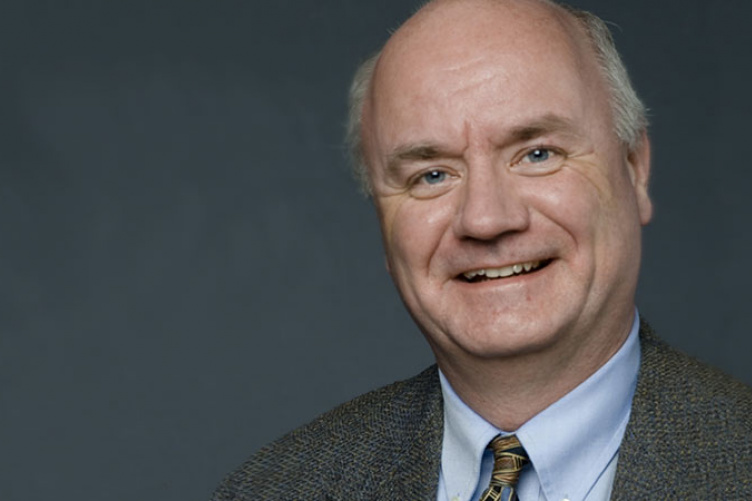
Click image for an article with more details.
17 November 2017
MIRL is involved with the UNH team working on MEME-X, or the Mechanisms of Energetic Mass Ejection eXplorer. This potential next generation NASA satellite to study the interaction of the Sun with the Earth's atmosphere. MEME-X was selected by NASA for Phase-A funding under NASA's Small Explorer Program to develop the mission further for possible selection as a funded mission. For further details, click the photo below.
18 October 2017
Congratulations to recent UNH alum, Morgan O'Neill, on her appointment to the faculty at Stanford University starting in 2018! Morgan was a 2009 graduate of the UNH Physics program who went on to earn her doctorate from MIT in 2015.
At UNH Morgan worked with Dr. Eberhard Moebius on the IBEX satellite mission and was directly involved with calibration of the IBEX star sensor using the MIRL optical calibration facility.
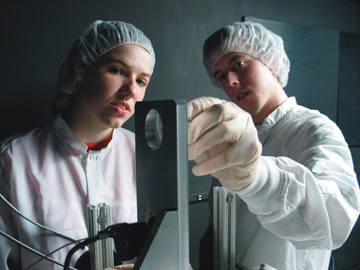
Morgan O'Neill and George Clark worked in
the EOS Facility for Optical Calibration at Low Light Levels where they calibrated the
star sensor for the IBEX mission. (Photo by D.Sims, UNH-EOS, Aug. 2009)


